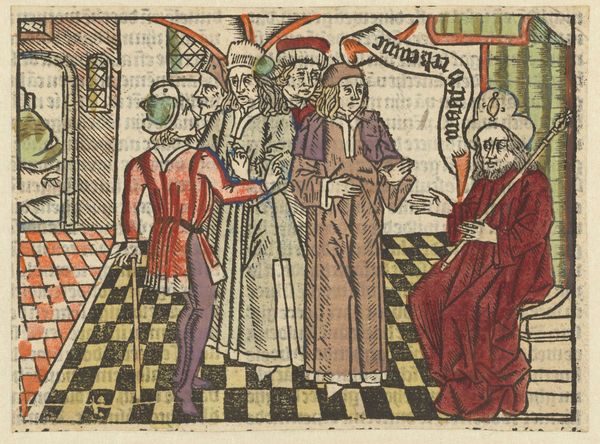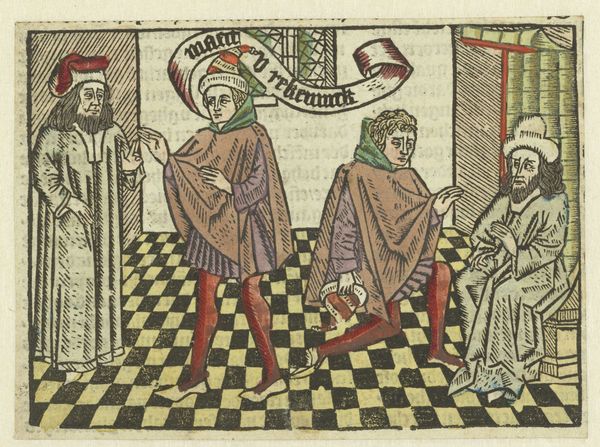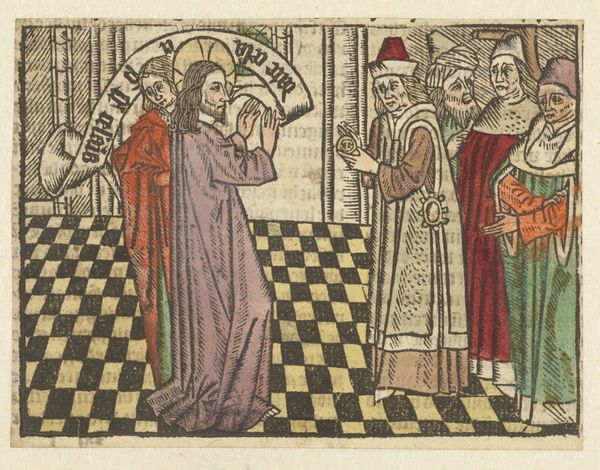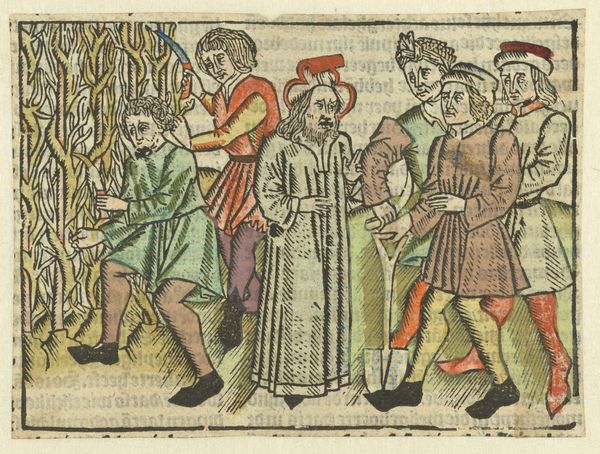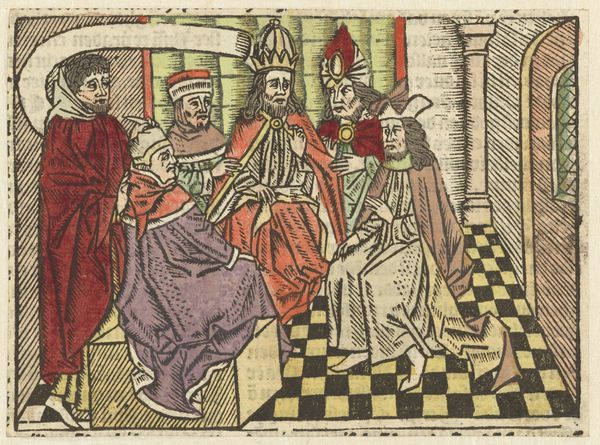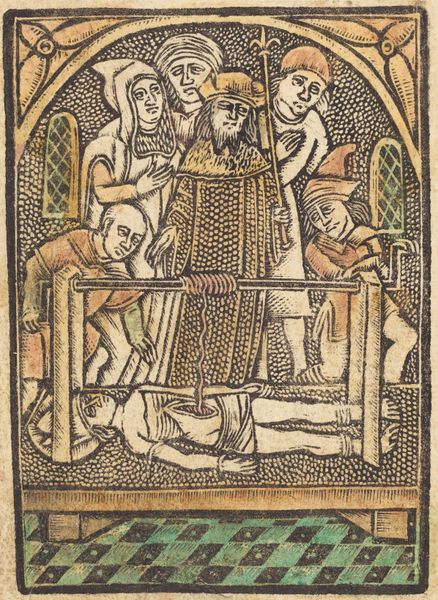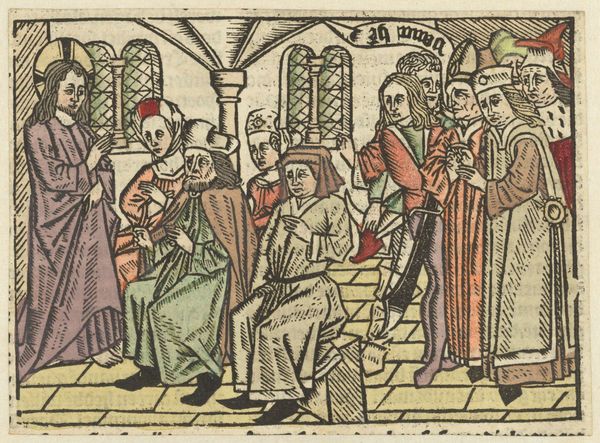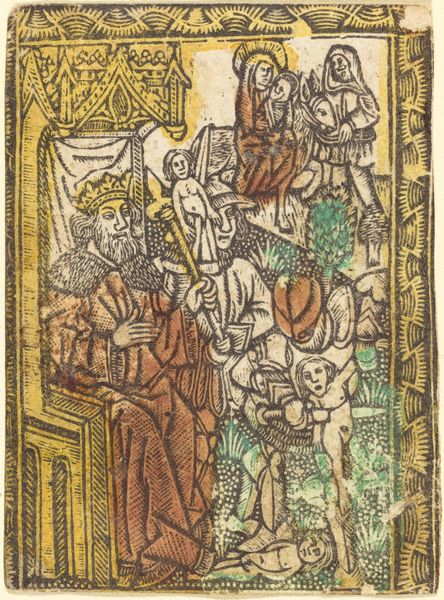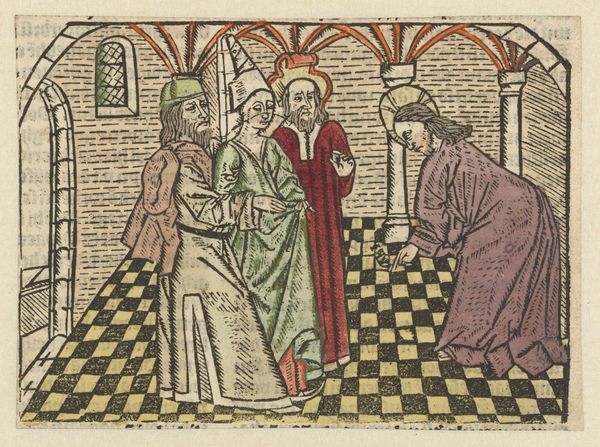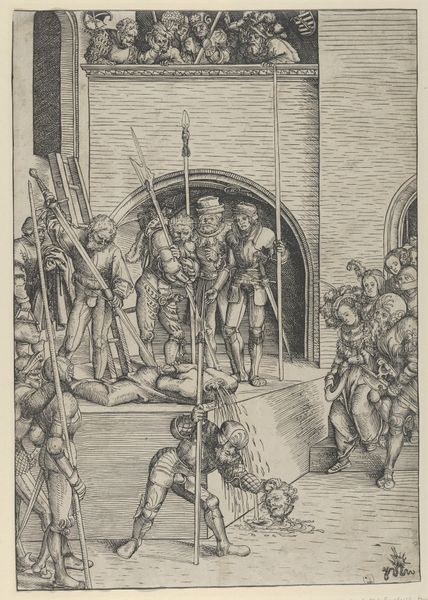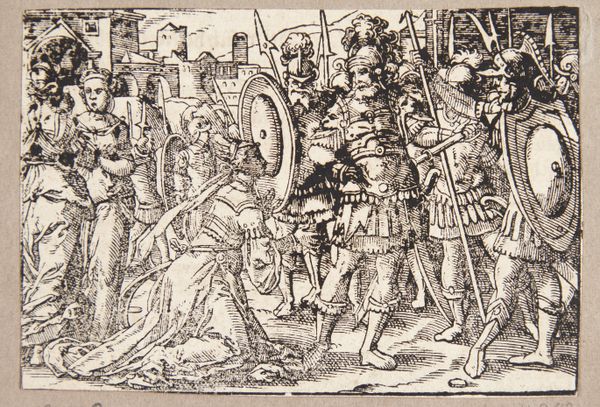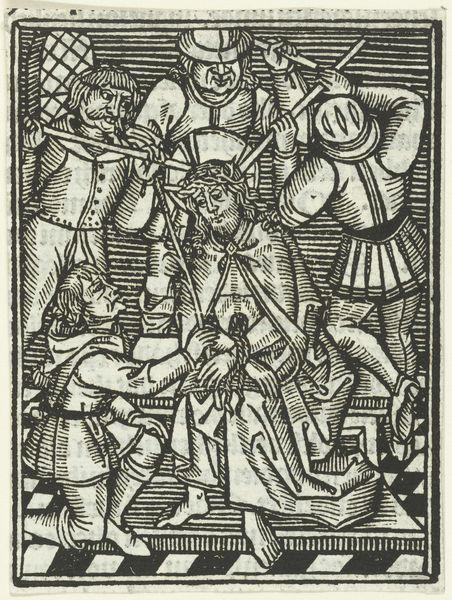
Soldaten berichten de hoge priesters dat Christus is herrezen 1485 - 1491
0:00
0:00
print, woodcut
#
narrative-art
# print
#
figuration
#
woodcut
#
northern-renaissance
Dimensions: height 97 mm, width 130 mm
Copyright: Rijks Museum: Open Domain
Editor: This woodcut from the late 15th century by Meester van Antwerpen (I) depicts "Soldiers Reporting to the High Priests That Christ Has Risen." I’m immediately struck by how the artist balances the chaos of the soldiers with the rigid composure of the priests. What's your interpretation? Curator: It’s a fascinating piece when we consider its social and cultural function. This print wasn't just decorative; it was a narrative tool during a time of widespread illiteracy. The composition – soldiers to one side, priests to the other – highlights the societal tensions of the era, doesn't it? Editor: Definitely. The soldiers, symbols of worldly power, contrast sharply with the priests, representing religious authority. Curator: Exactly! And what does it tell us about the intended audience and how this image might have been disseminated within a religious framework? Was it meant to reinforce faith, or perhaps critique the institutions involved? Consider the context: the Northern Renaissance grappling with religious reform. Editor: I hadn't thought of it as a commentary on power structures, more just a straightforward biblical scene. Curator: And it can be, of course! But art rarely exists in a vacuum. Woodcuts like this one were powerful forms of propaganda, influencing public perception. Are there visual cues in the piece, perhaps expressions or gestures, that might hint at a deeper message? Editor: The priest’s somewhat dismissive hand gesture… Perhaps suggesting skepticism? It does make you wonder what other social narratives were in play here. Thanks, that really changes how I see the work! Curator: It's through understanding this historical and social lens that we unlock the richer dialogues art initiates.
Comments
No comments
Be the first to comment and join the conversation on the ultimate creative platform.
